Types of Wood Finish and How to Choose
Get the ideal look for your next woodworking project with the right wood finish.
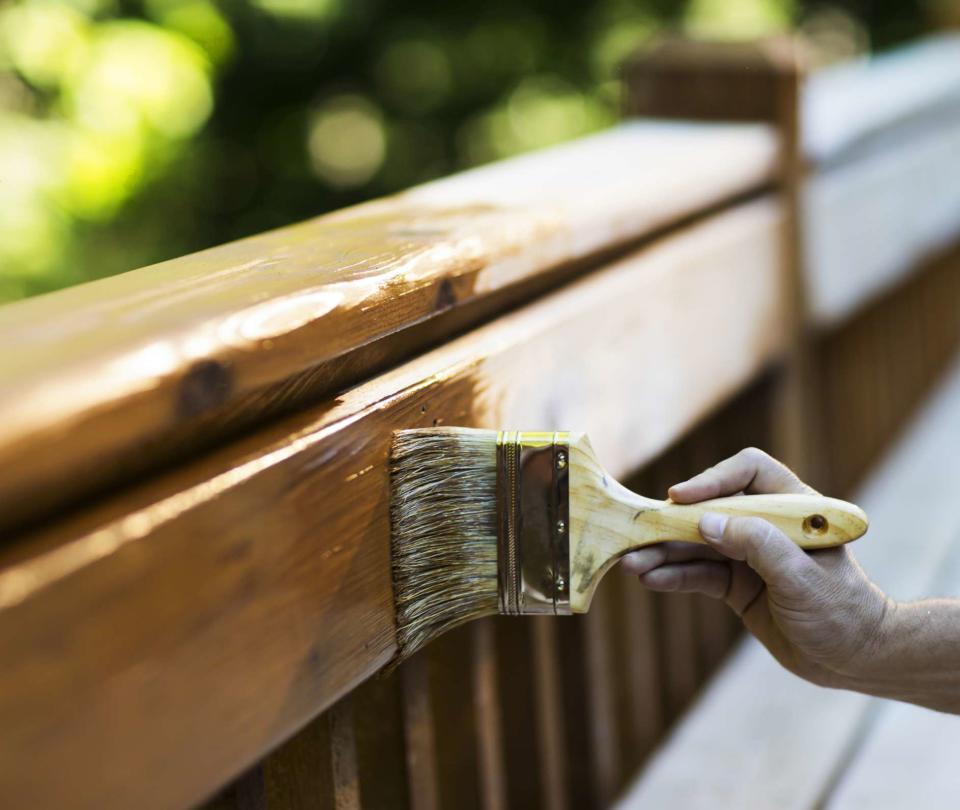
stevecoleimages / Getty Images
Reviewed by Johnathan Brewer
Wood finish is a protective coating on your wood projects such as fencing and furniture that prevents damage from UV radiation, rain, or high humidity. If left unprotected, these environmental factors can result in the wood drying out, cracking, swelling, or rotting. There are different types of wood finishes for different projects and knowing how to choose the right one will keep your project in beautiful condition for a long to come.
Learn more about the various types of wood finishes and what to keep in mind when selecting the best finish for the job.
The 9 Best Wood Stains of 2024
Tip
Take the time to properly research the different wood finishes available. Look into the potential risks of using each product, such as flammability (polyurethane), toxic fumes (shellac), and lasting environmental damage. If you need to use a hazardous wood finish, make sure to have the appropriate personal protective equipment (PPE) before you begin. Always work in a well-ventilated space. Dispose of any unused wood finish at a local recycling center.
Types of Wood Finishes
Wood finishes can be split into two primary types based on how the finish interacts with the wood, the appearance of the wood, and the level of protection afforded to the project. These two types include penetrating wood finishes, like tung oil, linseed oil, or cedar oil, and surface wood finishes, like varnish, polyurethane, or paint.
Stains and Paints
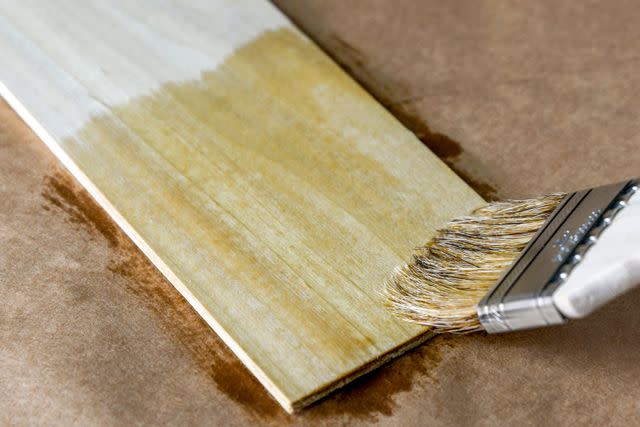
The Spruce / Adrienne Legault
Stain is commonly used to protect decks and fences from water and UV radiation in order to prevent cracking, drying, or rotting. Wood stain enhances the grain pattern of the wood and it is available in a wide variety of colors.
Paint, like stain, comes in a wide range of colors. However, wood paint is intended to fully cover the target surface, instead of allowing the natural appearance of the wood to show through. It can be used for both indoor and outdoor projects, including wood paneling, walls, doors, fences, decks, and furniture.
Penetrating Oils
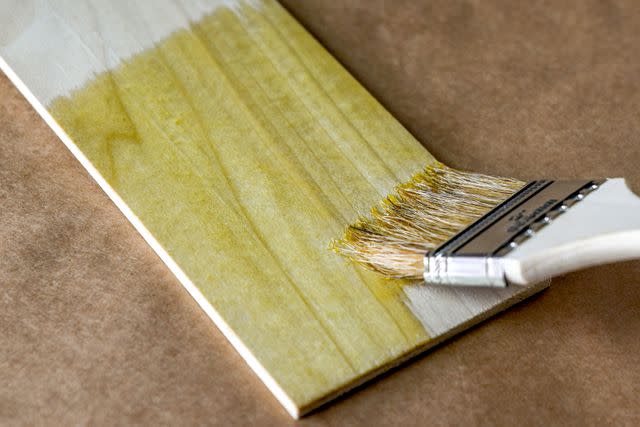
The Spruce / Adrienne Legault
Penetrating wood finishes tend to give wood projects a more natural appearance. As the name suggests, these wood finishes penetrate deep into the wood, providing protection against drying, cracking, swelling, and rotting.
Tung oil is an environmentally friendly wood finish that accentuates the natural appearance of the wood while adding a warm, golden glow. It has a high level of durability and resistance, making it suitable for boat decks and floors. Apply tung oil with a cloth or brush for best results.
Linseed oil is easy to apply using a brush or cloth, though this product tends to take a long time to fully cure. Use this wood finish for a natural look with a warm, yellow matte tone that darkens with age.
Danish oil is a highly durable wood finish that is made by mixing boiled linseed or tung oil, varnish, and paint thinner. It is regularly applied with a cloth or brush to coat wooden utensils and handles for a natural matte or gloss finish.
Cedar oil is a popular option that has a woody odor and it's known to help protect woodworking projects from insects, swelling, and rot. This wood finish has a warm, silvery-grey appearance that is great for floors and furniture.
Polyurethane
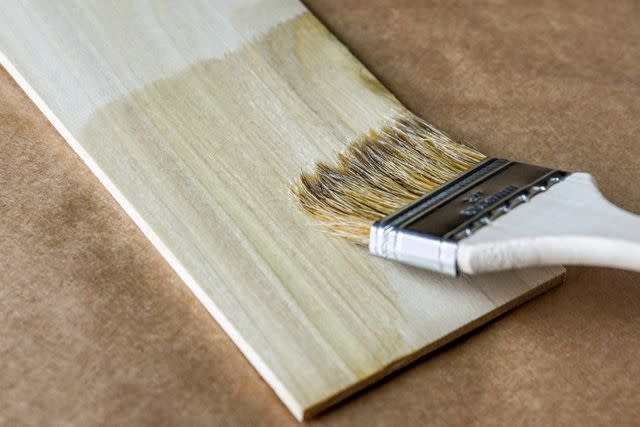
The Spruce / Adrienne Legault
Polyurethane is the most durable option for indoor woodworking projects. It's highly effective at protecting cabinets, doors, furniture, and floors from scratches and abrasive damage. Polyurethane is also water-resistant and is intended to enhance the natural appearance of the wood with a satin or mid-gloss finish.
Shellac
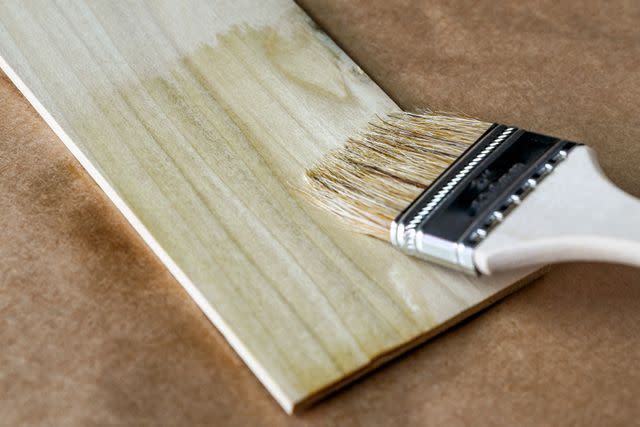
The Spruce / Adrienne Legault
Shellac has an attractive mellow finish that is intended to accentuate the natural grain of the wood. It is especially attractive on walnut and mahogany. Use a sprayer or a badger hair brush to apply shellac and choose from a range of color tones, like blonde or rich orange.
Lacquer
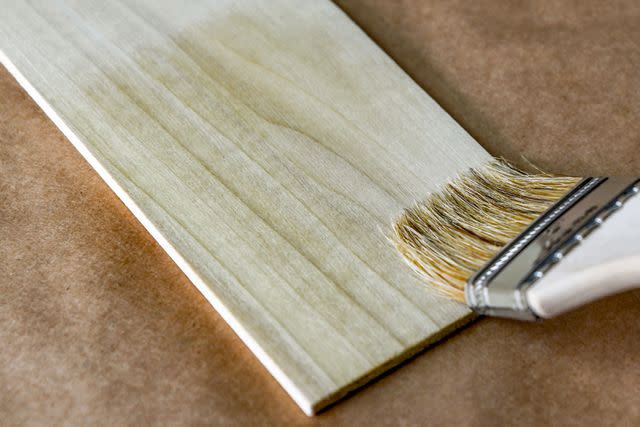
The Spruce / Adrienne Legault
Lacquer is another wood finish that is made by combining several other finishes, such as shellac, urushiol, or nitrocellulose. It's great for protecting wooden furniture, cabinets, doors, or shelving, and it can be applied with a sprayer or a natural bristle brush.
Varnish
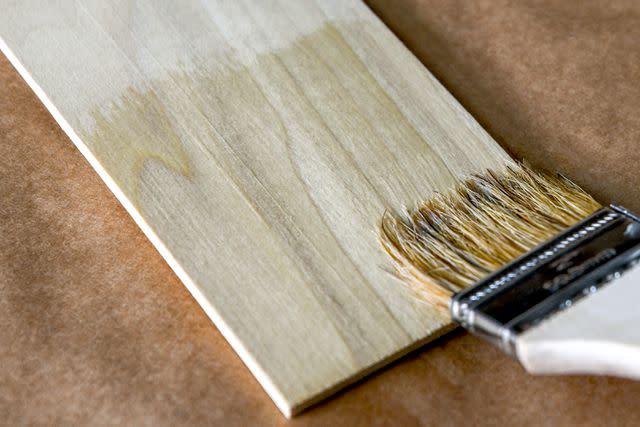
The Spruce / Adrienne Legault
Varnish is made for outdoor application due to its high resistance to UV radiation and moisture. This wood finish is typically transparent, though some products can have a yellow or orange tint. Apply varnish with a sprayer or a paint roller for the best results.
Wax
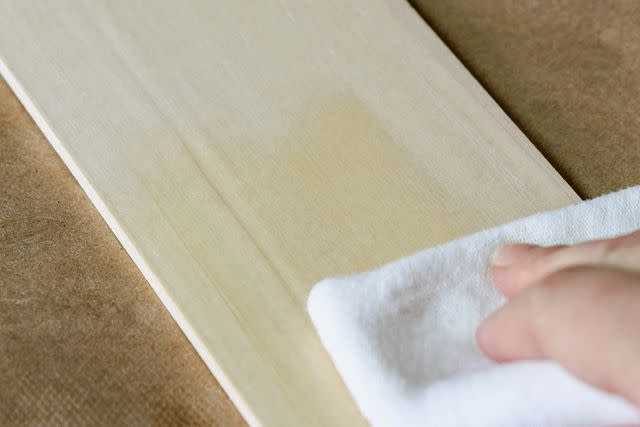
The Spruce / Adrienne Legault
Wax is an easy-to-apply wood finish that is ideal for hardwood floors and fine wooden furniture. Use a cloth, brush, or sprayer to apply the wax to the wood for increased physical and environmental protection.
Buying Considerations for Wood Finish
Durability and Resistances: Wood finishes protect woodworking projects by providing a physical layer that can prevent damage from scratches, chemical abrasions, and solvents. Choose a UV and moisture-resistant wood finish for outdoor projects to prevent cracking, drying, swelling, and rot.
Ease of Use: Consider how the finish is applied whether with a brush, cloth, or sprayer. Without experience, a sprayer may be trickier on high-quality projects like fine furniture.
Application Method: Not every wood finish can be applied using the same method. Some wood finishes are made for use with a fabric dabber, while others can be applied with a paint roller. Take an honest assessment of your skills and decide which finish calls for a method you can apply correctly.
Appearance: The final appearance can vary depending on the finish type. Water-based finishes maintain wood's natural look, while paint or wood stain can obscure the grain for a uniform finish. Varnishes and oils give the wood a natural appearance and may have a slight yellow or golden tinge. Shellac and lacquers give the wood a deep, rich appearance.
Drying Time: To get the desired result, make sure the wood finish has enough time to properly dry and to fully cure. This timeline can differ depending on the wood finish, so check the manufacturer's information for the suggested drying time.
How to Choose a Wood Finish
Before grabbing the first wood finish you spot on the shelf, take time to consider a few pieces of information that can help you narrow down the product selection.
The type of wood finish determines physical durability & environmental resistance. Varnishes protect against everyday wear and tear, UV radiation, and water but use a marine-grade finish for outdoor wood fully exposed to the elements. A polyurethane wood finish will be sufficient for pieces that remain indoors and aren't concerned with UV ray protection. Research the various wood finishes before deciding which is best for your project.
In addition to protection, the final appearance is important when choosing your wood finish. Paint and stain offer many color options for both indoor and outdoor projects. Oils, like tung oil, linseed oil, and Danish oil, appear more natural and greatly enhance the existing grain pattern of the wood. If you love the current appearance of the wood and want to preserve the look as much as possible, a clear stain or polyurethane finish is a good choice.
Frequently Asked Questions
What is the most durable finish for wood?
If you want to prevent damage to fine furniture, cabinets, or hardwood floors, oil-based polyurethane is the most durable wood finish available. This product is also water-resistant and UV-resistant.
What is the easiest wood finish to use?
Wood wax is generally considered the easiest type of finish to apply. You simply wipe it on and buff it off. The only caveat is to apply it very sparingly just a dab at a time. After letting the wax dry for 10 to 15 minutes, simply buff it with a clean cloth.
Is it better to oil or wax wood?
Both oil and wax resist water and provide protection. The difference is that oil penetrates the surface offering deeper resistance to damage and enhancing the beauty of the wood. Oil also protects from heat and UV radiation more than wax. Choose wax to preserve the current look of the wood, and oil for deeper protection and the beauty of a flat, satin, or glossy finish.
How to Refinish Wood Furniture
Read the original article on The Spruce.

